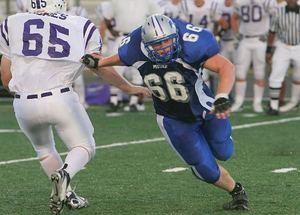The writer, Michelle Powers, will discuss General Motors and the corporation’s transition from a traditional organizational model to a transformed organizational model. Ms. Powers will identify how changing the organizational model impacted General Motor’s diverse workforce, General Motors’s customer base, and local communities that surrounded General Motors’s factories. Ms. Powers will also describe the support systems that were put in place at General Motors to ensure that the transition was successful.
Traditional organization models consist of a hierarchical structure with a president or executive at the top, followed by vice presidents or senior managers, then additional layers of management below, and with the majority of the employees on the bottom. Jobs in traditional organizational models are grouped by function into departments; this was the case at General Motors. (Jex, 2002) General Motors was divided into different independent automakers; Buick, Cadillac, Oldsmobile, Chevrolet, and Pontiac. Each independent automaker was operated differently and competing with each other. The competition among its own independent automakers and lack of centralization was costly! (Taylor, 2004)
The transformed organizational model is centralized and unified; a team versus several individuals working towards common goals. With a transformed organizational model corporations are run in a more streamlined manner and that is a more cost effective manner of running a corporation. A transformed organizational model does not have several departments, all performing different tasks and with different needs. (Jex, 2002) Jack Smith, General Motors’s CEO, saw an opportunity for change, “I had the opportunity to really structure the business in the way I thought it should run — Frankly, at the time we weren’t like any other auto company in the world” (Taylor, 2004).
Mr. Smith and his successor Rick Wagnor spent several years transforming General Motors in to a more centralized organization using the transformed organizational model. This transformation drastically changed the diverse workforce at General Motors. The staff, including management, at General Motors had to learn a central set of skills; for example, each independent auto maker was using different computer software causing inter-corporation communication to be difficult and sometimes impossible. The staff at General Motors all had to learn a central software program; this included all General Motors global offices as well. This was a large undertaking but in the end communication was more productive and easier! General Motors engineers also had to centralize and learn each other’s methods of design and engineering. Staff needed to learn to communicate and work as a team not as individuals completing a particular piece of the puzzle. (Taylor, 2004)
General Motors had to put support systems in place to assure the changes were successfully implemented. The Automotive Strategy Board, a management committee, was established to keep General Motors’s CEO informed of the on goings of the corporation. Monthly meetings were established and attendance was mandatory; global offices attended these meeting via phone. All the heads of regional operations would utilize these meetings to inform the CEO of the progress of the transformation. These meetings enabled all the staff to be on the same page and working towards the same goals; another attribute of the transformed organizational model. (Taylor, 2004)
General Motors is a large corporation and when this transition took place several groups of people were affected. Two of the external stakeholders that were affected were customers and local communities were General Motors’s factories were built. Some of General Motors’s vehicle brands were discontinued making upgrading or servicing particular vehicle models difficult for customers. Customers are traditional loyal to particular brands so when those brands are no longer available they look for something new; this caused General Motors to lose some of their customer base. (Taylor, 2004).
Many communities build and grow around large employers; during this transition some of General Motor’s factories were closed in order to streamline production. When large corporations in towns close their factories, entities such as, restaurants, gas stations, the real-estate market, and grocery stores suffer financially. Therefore, this causes a downturn in the community’s financial well-belling; everything from property taxes to sales tax suffers. This type of financial suffering causes a chain reaction in the community; less money coming into the community causes unemployment, large budget cuts, and police and fire departments are downsized. When this type of downsizing occurs people tend to move out of the town causing the cycle to start over. (Taylor, 2004)
General Motors’s transition from the traditional organizational model to the transformed organizational model caused positive and negative change. Some communities suffered horribly during this transformation; families losing jobs, people losing their home, businesses having to close or downsize, and towns having to rethink their existence. Some of the positive changes that occurred were; General Motors became one corporation working together, operational costs decreased due to streamlining functions and operations, and effective communication methods were established. In order to make progress change has to occur, in some cases change is positive and in others negative, but in the end people are one step closer to learning something new and knowledge is power!
References
Jex, S M. (2002). Organizational Psychology: A scientific practitioner approach. , New Jersey:John Wiley & Sons, Inc..
Taylor III, A. (2004, April 5). “GM gets its act together: How America’s No. 1 car company changed its ways and started looking like…Toyota.” Fortune, 149, 136-146.



